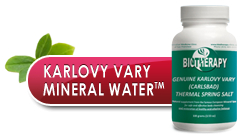How Biotherapy Clinic can help people with Small Intestinal Bacterial Overgrowth (SIBO)
If you are here, you know these words Small Intestinal Bacterial Overgrowth (SIBO). Maybe you or your loved one suffers from excess gas, constant abdominal bloating and distension, diarrhea or constipation, and abdominal pain.
You possibly took many courses of the antibiotics, and you are weak and depressed.
SIBO is an acronym for the Small Intestinal Bacterial Overgrowth. Thanks to technology, and using breath tests, SIBO has begun to catch the doctors’ eyes over the last decade.
American professors-gastroenterologists believe that “Small Intestinal Bacterial overgrowth (SIBO), defined as excessive bacteria in the small intestine, remains a poorly understood disease. A number of diagnostic tests are currently available, although the optimal treatment regimen remains elusive”.
The causes and conditions, which are connected to SIBO
Structural/Anatomic
|
Organ System Dysfunction
|
Motility Disorders
|
Metabolic Disorders
|
| Elderly | Medications
|
Let us explain what is happening in SIBO to convince you that the typical “find and destroy” approach by killing bacteria by antibiotics is not enough.
Almost all digestion occurs in the small intestine, in a narrow tube about 7 meters (23 feet) long and 1-1.5 inches in diameter. Mother Nature doesn’t like to feed invaders, so the amount of bacteria at this location is very low. It must be emphasized again that the small intestine is designed for digestion, and that microbes and yeast are not allowed access. Otherwise, harmful invaders would eat our food and nutrients and starve us.
To keep small intestine free from harmful bacteria, the human body has sophisticated mechanisms.
1. All microorganisms and parasites, which we can obtain from food and water, travel though the stomach. The first strong guard of the GI tract; gastric acid, kills many microorganisms. Because extreme acidity in the stomach kills the germs, little can survive passage through this “hostile” environment. When the acid is suppressed, however, bacteria, yeast, and parasites may travel through, thrive, and cause trouble.
2. Some of the invaders, which survive in the stomach, travel into the duodenum – the beginning of the small intestine. When the acidic gastric chyme escapes into the duodenum, a flow of bile is released from the gallbladder, while simultaneously, the pancreas releases the pancreatic juice. Here the semi-fluid digested food from the stomach is neutralized by pancreatic juice and bile, which are extremely alkaline in nature. Pancreatic juice contains very strong antimicrobial substances. The enzymes that are designed to digest the proteins also digest unwanted visitors such as microbes, yeast, viruses, and parasites. Antimicrobial action of pancreatic juice makes the environment inside the small intestine clear and unfriendly for microbes and yeast.
3. In healthy conditions, there is a minimum possibility for the survival of microorganisms in the small intestine. 2.5 quarts of bile and pancreatic juice plus about 2 quarts (1.8 liters) of intestinal juice are secreted into the small intestine each day. This “river” flashes out the unfriendly bacteria out of the small intestine as well.
4. The healthy immune system fights and kills the unfriendly microorganisms inside the small intestine.
5. Friendly intestinal flora such as Lactobacilli Acidophilus resides in the end of the small intestine, close to the colon. It competes with bad bacteria and does not allow them to multiply. Through evolution, some microbes live in the human body with a dynamic balance between the human control system and microorganisms. If this gentle balance is broken, diseases occur.
It should be easy to understand the reasons that lead to the Small Intestinal Bacterial Overgrowth – SIBO.
If the stomach acidity is decreased, the exocrine pancreatic function and antibacterial action of pancreatic juice are diminished, there is chronic constipation, the ileocecal valve opens, our immune system is weak, or the friendly intestinal flora is killed, then the small intestine receives microbes, viruses, yeast, and parasites.
These microorganisms:
- Eat our food and cause a deficit of vital nutrients
- Allow toxins to kill our body
- Enable these toxins to break the protective barrier of our GI tract and run through intestinal walls to the blood and lymph and gain access to the rest of the body
- Cause chronic immune reactions such as allergies and autoimmune diseases
- Produce whole body acidity and toxicity by fermentation (constant brewing process)
Putting in account various reasons for development SIBO, the healing actions have to be focused on different aspects of this condition. All statements about “eradication”, “killing”, and “eliminating” are very far from the pathophysiology of the Small Intestinal Bacterial Overgrowth and other opportunistic infections in the gastrointestinal tract.
Common sense, practical observations and solid medical researches tell us that instead of focusing only on destroying the infections, it is also necessary to re-establish all possible mechanisms that naturally control the growth of opportunistic infections in the gut, which include stomach acidity, proper pancreatic function, normal bowel transit time, strong immunity, and restoration of the friendly intestinal flora. To make an analogy, nobody will grow the roses in the garden that is full of weeds, toxic chemicals, bugs, and rodents, in the garden without good soil and proper amount of the water.
Biotherapy Alternative Medicine Clinic of San Francisco Bay Area offers for suffers from the Small Intestinal Bacterial Overgrowth a comprehensive healing program. The main idea of this program is to remove toxins, waste material, yeast, parasites and pathogenic microorganisms and to restore the proper balance of friendly intestinal flora, normal digestion, proper amount of nutrients, etc.
This program includes:
- Healing Diet
- Drinking healing mineral water prepared from genuine Karlovy Vary spring salt
- Whole Body Cleansing through the Restoration of Friendly Intestinal Flora and Colon Hydrotherapy
- Anti-Candida Program
- Acupuncture
- Nutrition Supplementation and Herbs
As a result, symptoms may be reduced due to improvement of digestion and normalization of the gastrointestinal tract functions. To begin undergoing services at the Biotherapy Clinic for Small Intestine Bacterial Overgrowth (SIBO), please select one of the following options:
- Telephone consultation (415) 409-3939
- Office consultation at one of our conveniently located offices, San Francisco and Redwood City
Please read this for more information

